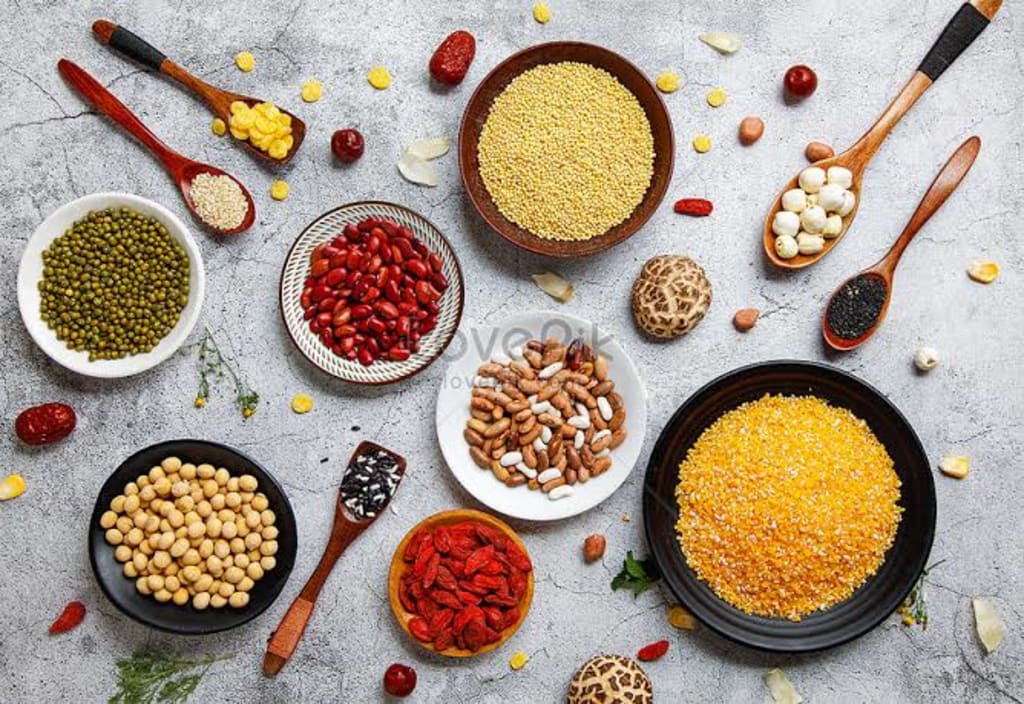
Our health is greatly influenced by what we eat. The food we consume plays a vital role in keeping our body healthy and free from diseases. One such food item that has gained a lot of attention in recent times due to its health benefits is coarse grains. Coarse grains are known to be extremely beneficial for people who are suffering from health issues such as diabetes, high blood pressure, and high cholesterol. These grains are rich in fiber, protein, and other essential nutrients, which makes them a perfect addition to any diet. In this article, we will discuss in detail the benefits of eating coarse grains and how they can help in curing various health issues.
What are Coarse Grains?
Coarse grains refer to a group of grains that have a higher fiber content as compared to other grains. These grains are usually larger in size and have a tough outer shell or husk. Some common examples of coarse grains include millet, corn, barley, sorghum, oats, and brown rice. Coarse grains are also referred to as 'whole grains' as they are consumed in their natural and unprocessed form. The husk or outer shell of these grains is usually removed before they are cooked and consumed.
Benefits of Coarse Grains:
- Helps in controlling Diabetes: Coarse grains are known to have a low glycemic index which means that they release sugar into the bloodstream at a slower rate. This makes them an excellent food option for people who are suffering from diabetes as they help in regulating blood sugar levels.
- Aids in Weight Loss: Coarse grains are high in fiber which makes them a great food option for people who are looking to lose weight. These grains keep you feeling full for longer periods of time and help in reducing overall calorie intake.
- Reduces the Risk of Heart Diseases: Coarse grains are rich in antioxidants, minerals, and vitamins which help in reducing the risk of heart diseases. The high fiber content in these grains also helps in reducing cholesterol levels in the body.
- Helps in Digestion: Coarse grains are high in fiber which helps in regulating bowel movements and preventing constipation. These grains also promote the growth of healthy bacteria in the gut which aids in digestion.
- Boosts Immunity: Coarse grains are rich in nutrients such as zinc, iron, and vitamin B which help in boosting the immune system. A strong immune system helps in preventing diseases and infections.
- Lowers Blood Pressure: Coarse grains are known to be low in sodium which makes them an excellent food option for people who are suffering from high blood pressure. These grains help in reducing blood pressure levels and preventing hypertension.
- Reduces the Risk of Cancer: Coarse grains are rich in antioxidants which help in preventing cell damage and reducing the risk of cancer. These grains also contain phytochemicals which have anti-cancer properties.
Types of Coarse Grains:
- Millet: Millet is a group of small-seeded grasses that are widely grown around the world. It is an important food staple in many developing countries and is a good source of protein, fiber, and other nutrients. Millet is also gluten-free, making it an excellent choice for people with celiac disease or gluten intolerance.
- Sorghum: Sorghum is a grain crop that is grown in many parts of the world, particularly in Africa and Asia. It is a rich source of protein, fiber, and antioxidants, and is also gluten-free. Sorghum can be used to make flour for baking, or it can be popped like popcorn for a tasty snack.
- Quinoa: Quinoa is a gluten-free grain that is native to South America. It is high in protein, fiber, and other nutrients, making it an excellent choice for vegetarians and vegans. Quinoa is also very versatile and can be used in a variety of dishes, from salads and soups to stir-fries and baked goods.
- Buckwheat: Buckwheat is a nutritious grain that is gluten-free and high in protein, fiber, and antioxidants. It is also a good source of essential amino acids, making it a complete protein. Buckwheat can be used to make flour for baking or as a substitute for rice or other grains in stir-fries and other dishes.
- Amaranth: Amaranth is a gluten-free grain that is native to the Americas. It is high in protein, fiber, and other nutrients, and has been shown to have anti-inflammatory properties. Amaranth can be used in a variety of dishes, from breakfast cereals to soups and stews.
- Barley: Barley is a grain that is commonly used in soups and stews, but can also be used to make flour for baking. It is high in fiber and protein, and has been shown to lower cholesterol levels and reduce the risk of heart disease.
- Teff: Teff is a gluten-free grain that is native to Ethiopia. It is high in protein, fiber, and other nutrients, and is also a good source of iron and calcium. Teff is often used to make injera, a type of flatbread that is a staple food in Ethiopia.
- Rye: Rye is a grain that is commonly used to make bread, particularly in northern and eastern Europe. It is high in fiber and protein, and has been shown to have a lower glycemic index than wheat, making it a good choice for people with diabetes.
- Oats: Oats are a type of coarse grain that is commonly used in breakfast cereals and baked goods. They are high in fiber and protein, and have been shown to lower cholesterol levels and reduce the risk of heart disease.
Incorporating coarse grains like millets, Oats, ragi, and Barley in your diet can have numerous health benefits. These grains are easily available and can be prepared in various ways like porridge, roti, or as a side dish. So, switch to coarse grains today and enjoy a healthy and disease-free life.
Please subscribe us for more such health related information.
About the Creator
Sana
𝐌𝐞𝐝𝐢𝐜𝐚𝐥 𝐬𝐭𝐮𝐝𝐞𝐧𝐭⚕️ Medical & health..






Comments
There are no comments for this story
Be the first to respond and start the conversation.